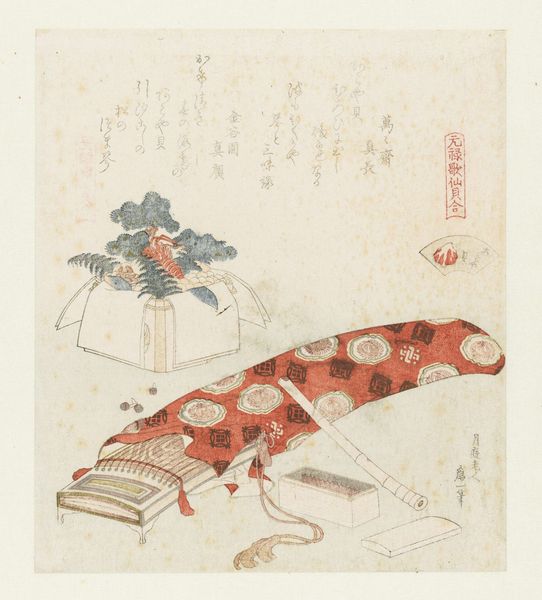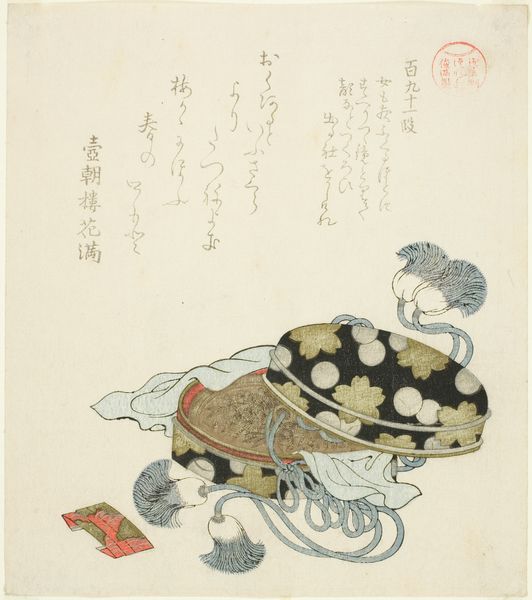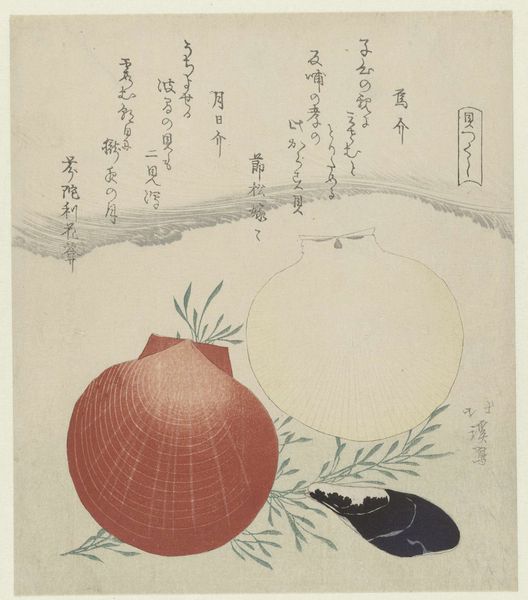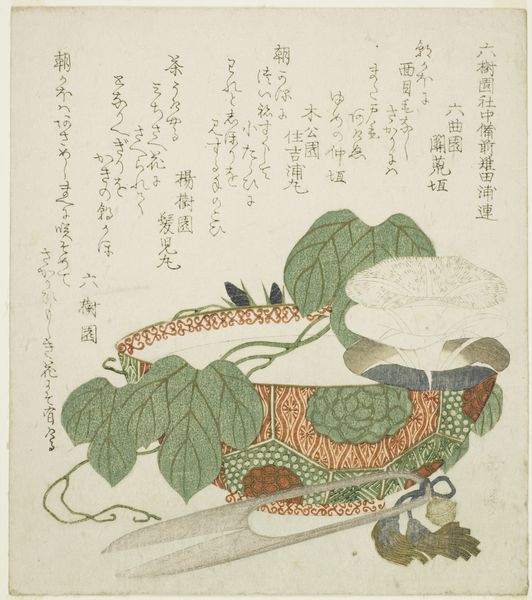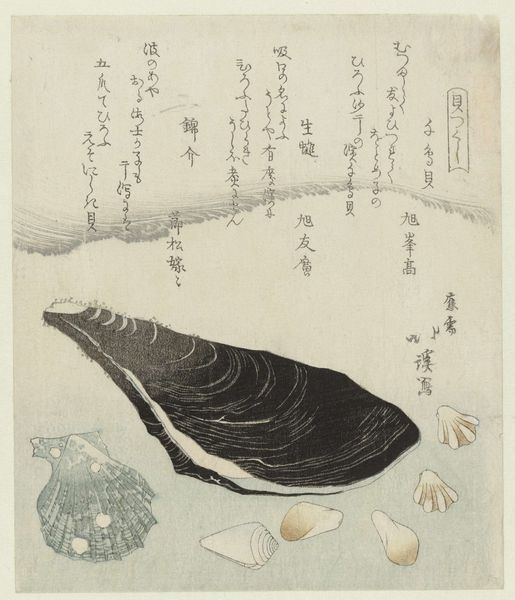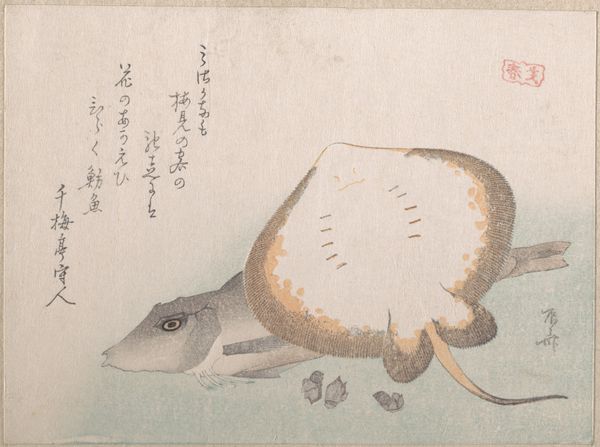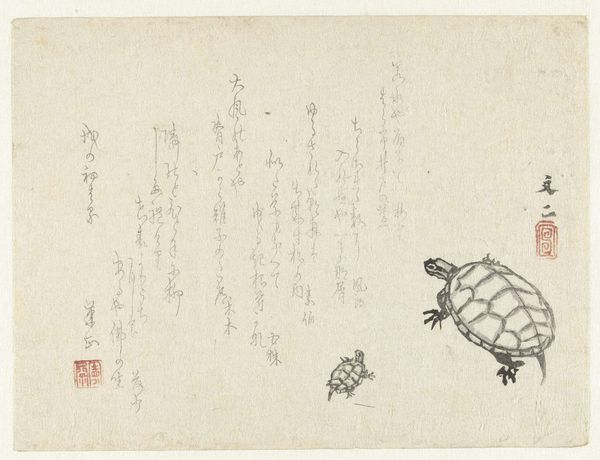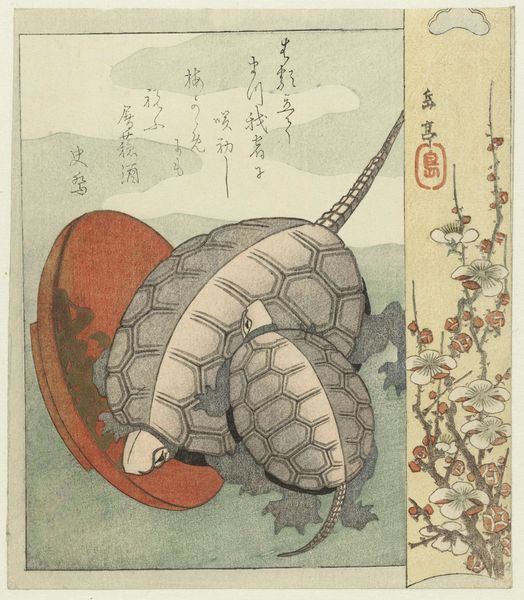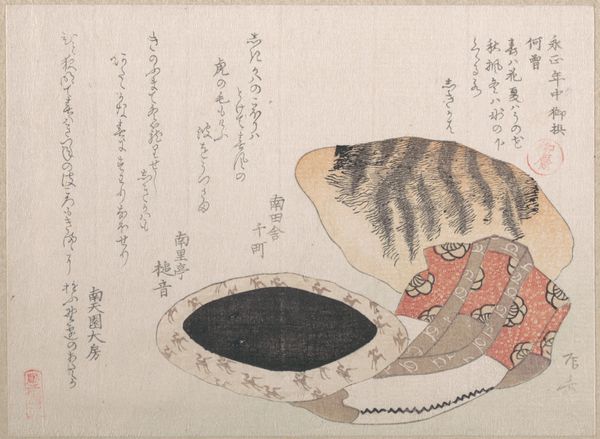
print, paper, ink, woodblock-print
#
aged paper
#
toned paper
#
light pencil work
# print
#
asian-art
#
ukiyo-e
#
paper
#
personal sketchbook
#
ink
#
coloured pencil
#
woodblock-print
#
sketchbook drawing
#
watercolour bleed
#
watercolour illustration
#
sketchbook art
#
watercolor
Dimensions: height 206 mm, width 182 mm
Copyright: Rijks Museum: Open Domain
Curator: Here we have Totoya Hokkei’s "Reflectieschelp, ivoorschelp en tritonschelp," created around 1821. It's a woodblock print on paper, a stunning example of Ukiyo-e from the Rijksmuseum's collection. Editor: My first impression is one of muted calm. The delicate watercolors and light pencil work create a serene and almost meditative mood. The composition, with the shells scattered across the aged paper, feels both deliberate and casual. Curator: Absolutely. Hokkei masterfully uses the woodblock technique to render the intricate textures of the shells. Notice the careful gradations of color and the delicate linework that defines each shell’s unique form. The varying tonalities give the work remarkable depth and visual interest. Editor: Beyond the aesthetic qualities, Ukiyo-e prints like this were widely circulated. This gives insight into popular culture and commercial art of the time. Was there a specific audience for these kinds of shell studies? What did the shells themselves signify within Japanese society? Curator: Well, consider the asymmetry—the placement of each shell, and the relation to the inscribed text above. While appearing almost incidental, each form presents its own subtle complexities of structure and presence, prompting questions around negative space. Note the contrast in surface and texture. Editor: Good point. And to build on that, such prints were often commissioned for poetry circles or literary societies. It was a very sophisticated consumer culture surrounding the arts in Japan, especially in Edo, modern-day Tokyo. Also, did shell collecting have specific associations in this time? Curator: That’s a layer of context I appreciate—framing this through societal ritual rather than simple surface alone. It definitely enhances my perception. Editor: And seeing that these were originally personal sketchbook art, understanding the evolution of its context enriches our understanding of their current form. Curator: It’s always enriching to view an artwork with an eye towards both its internal mechanics and external forces. Editor: Agreed. Hopefully, visitors can see this layered significance within the beauty of this small, subtle study.
Comments
No comments
Be the first to comment and join the conversation on the ultimate creative platform.



